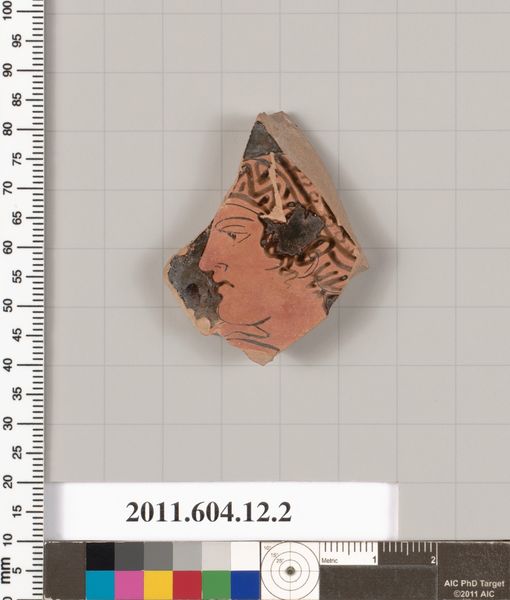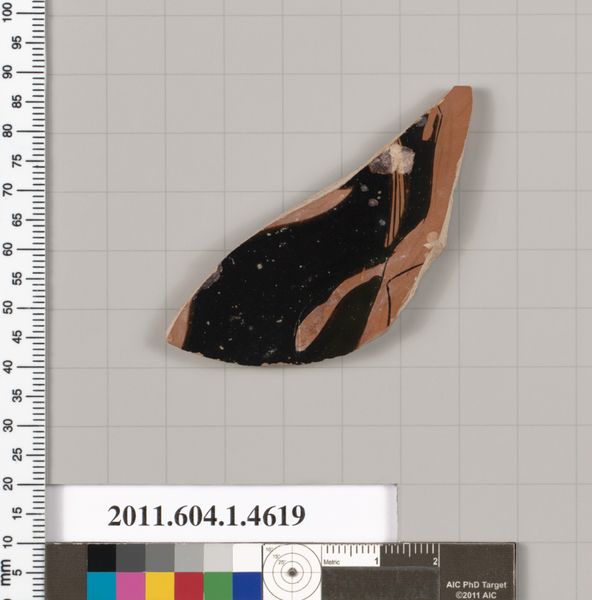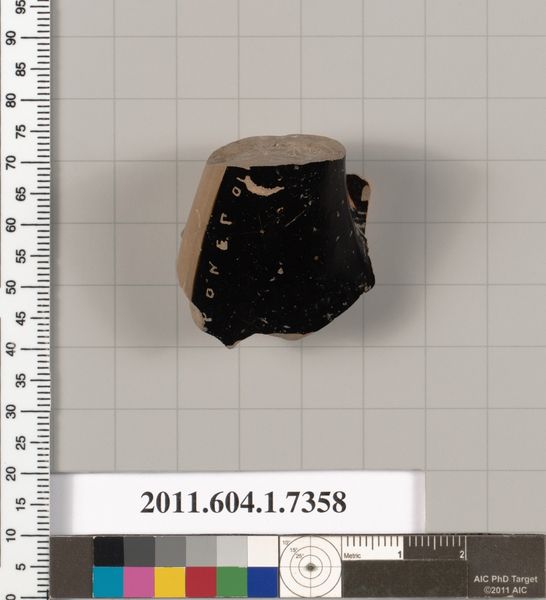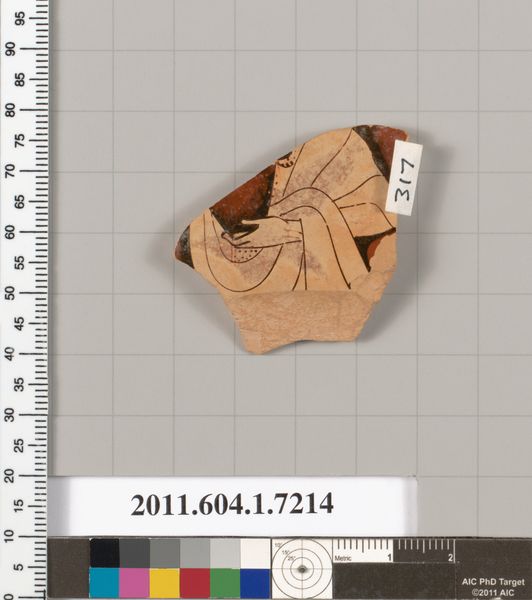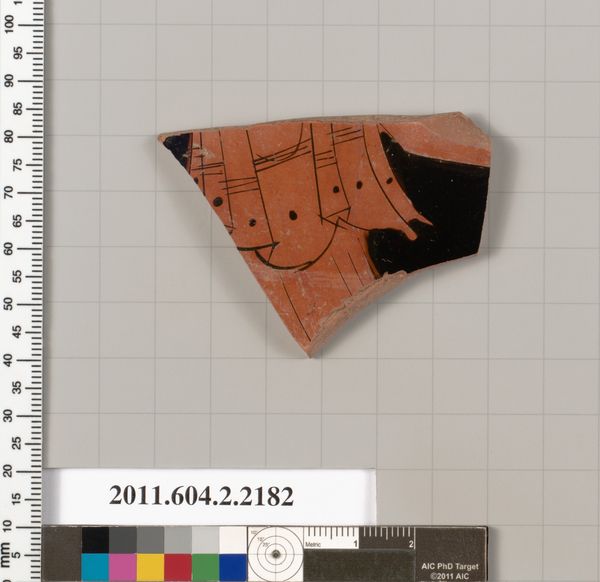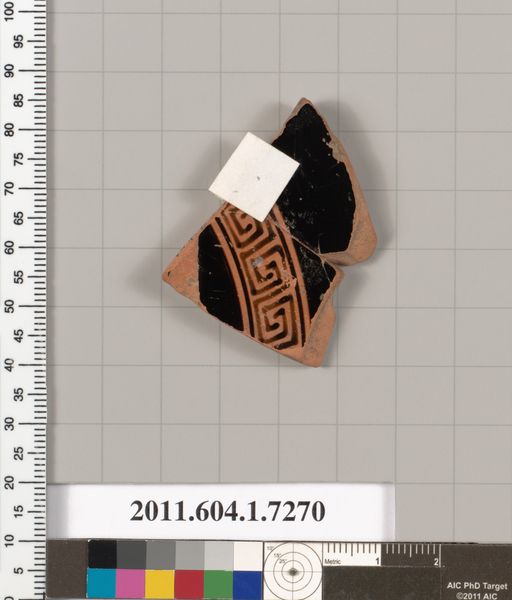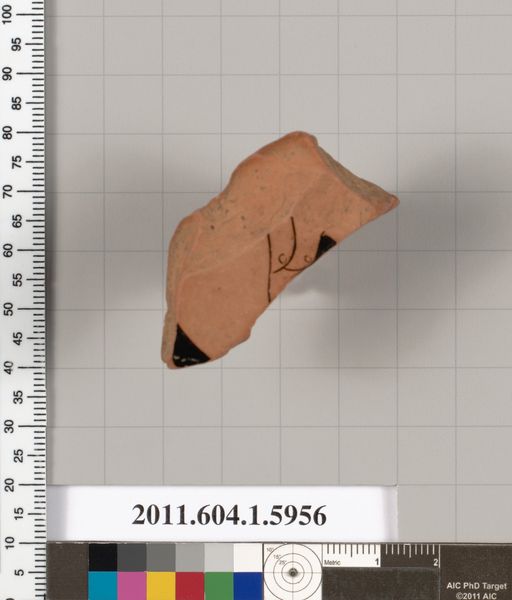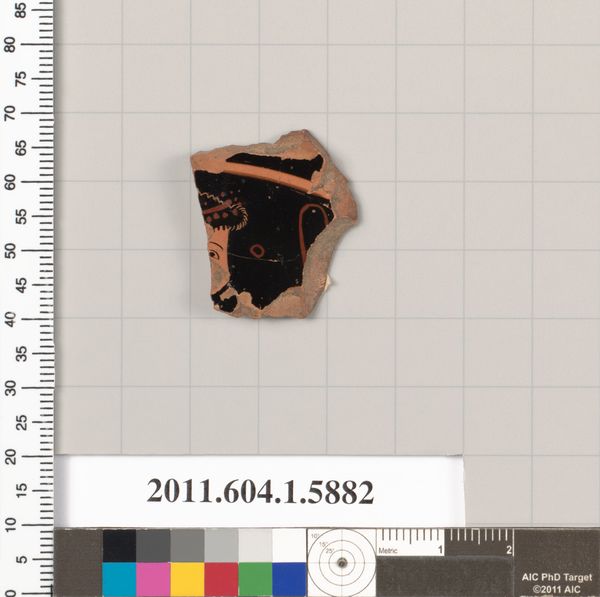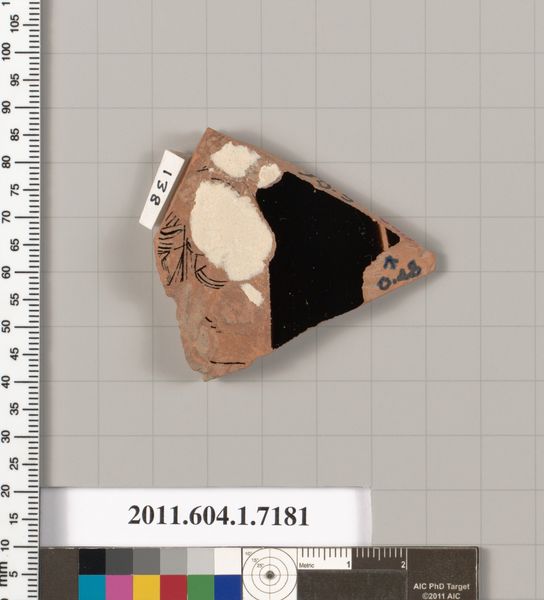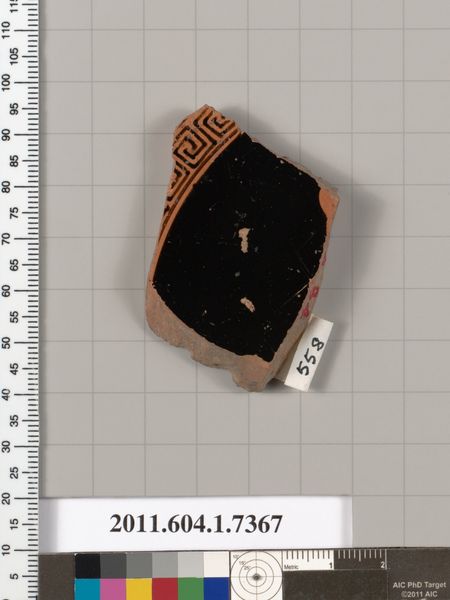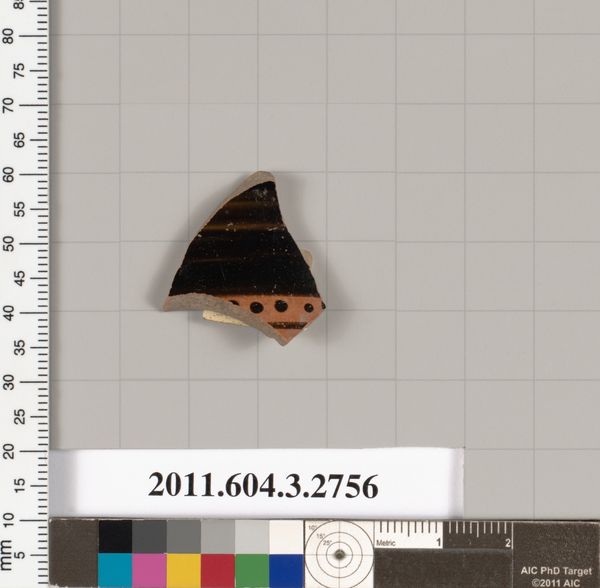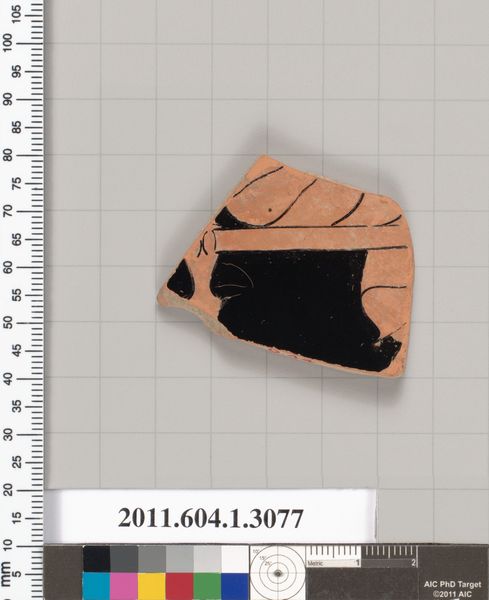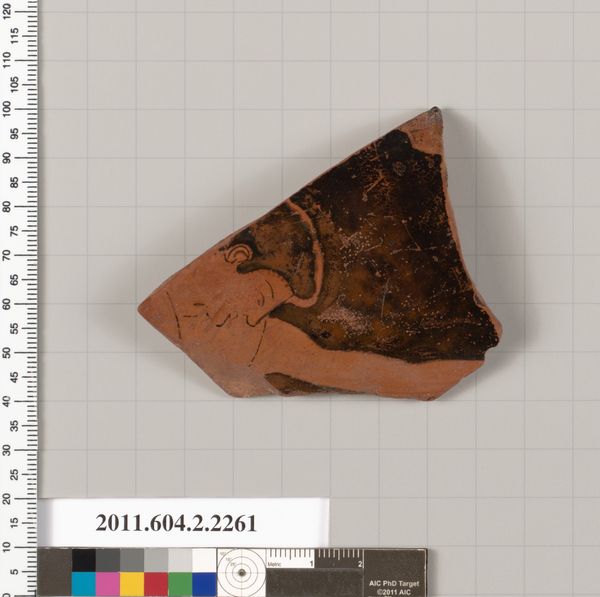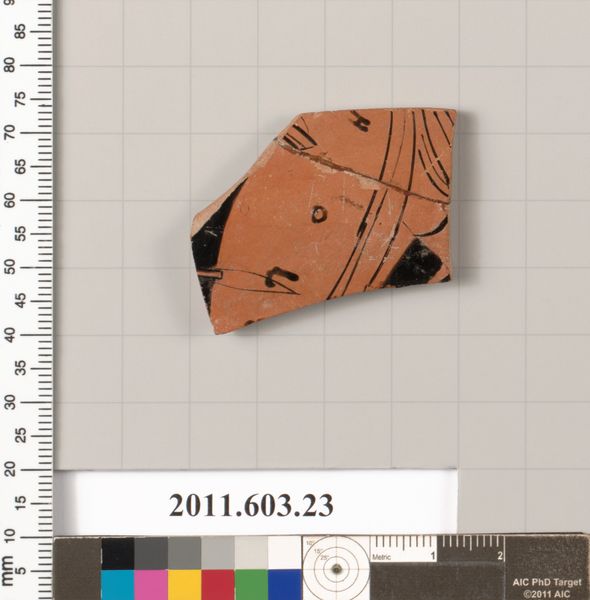
drawing, ceramic, terracotta
drawing
greek-and-roman-art
ceramic
vase
figuration
ancient-mediterranean
terracotta
Copyright: Public Domain
Curator: This terracotta fragment, dating back to around 650 BC, is attributed to the workshop of Psiax, an Athenian vase painter and potter. Editor: The stark contrast between the dark figures and the reddish-orange clay immediately strikes me; there’s an earthy, fragmented feel to it, given the broken edges. Curator: Indeed. The black-figure technique is evident, though here we only see a fragment, possibly from a neck-amphora or similar jar, that provides a limited glimpse into Psiax’s artistic approach. We can observe, near the upper rim of the fragment, careful geometric patterns with precise linework, and then a dynamic figure scene. Editor: Given the period, this technique feels both functional and highly decorative. Considering its original form as a vessel and its likely daily use, how would the making process and material selection influence its cultural value at that time? Curator: We must interpret form through the lens of surface design. The carefully orchestrated black glaze creates shape and detail, animating the vessel itself. These formal patterns establish a visual rhythm—and ground the work within specific artistic and cultural contexts. Editor: Perhaps the division is artificial. To fully understand its formal arrangement, you need to see how it functioned and who would have used it. And its inevitable shattering points to how objects’ utility intersects with mortality and meaning-making. Curator: Although broken, the fragment possesses a remarkable visual energy and presents, even in its incompleteness, key stylistic developments in early Attic pottery production. The visible dynamism of the horse or perhaps Centaur adds considerably to that energy. Editor: I find it powerful to see beauty and intention survive even after its original purpose has passed, reminding us that art’s context extends beyond its initial creation to its lasting relevance. Curator: Precisely, an incomplete vessel reminds us also of what remains whole, providing a partial view onto a long-vanished world.
Comments
No comments
Be the first to comment and join the conversation on the ultimate creative platform.
